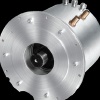|
Technology Roadmap
Roadmap scope
The Electric and Plug-in Hybrid (EV/PHEV) Vehicles
Roadmap has been developed in collaboration
with governments, industry and non-government
organisations (NGOs). The approach began with
a review and assessment of existing domestic and
international collaboration efforts by member
governments and industry groups on EV/PHEV
technology and deployment. These efforts included
all technical and policy-related activities associated
with moving this technology from the laboratory to
widespread commercial use.
This roadmap covers the two main types of
electrification for light-duty vehicles: pure batteryelectric
vehicles (EVs) and plug-in hybrid electric
vehicles (PHEVs). Non plug-in hybrids and other
efficiency improvements in current ICE vehicles will
be covered under a separate roadmap.
In the near term, electric-drive vehicles will most
likely appear as personal vehicles—sedans, light
trucks and electric scooters and bikes. Buses may
also be relatively early adopters, especially in
applications such as extended electric range hybrids
and electric trolleys (i.e., trolleys that can leave
the overhead line system and run autonomously
on batteries for part of the route). However, for
heavier vehicles such as long-haul trucks, planes
and ships, for example, the energy density and
range limitations of batteries are likely to prevent
significant market penetration until additional
advances are made in lightweight, energy-dense
battery (or other energy storage) technology. As
such, this roadmap focuses on passenger vehicles
and what stakeholders can do to expedite their
electrification.
Roadmap vision
The vision of this roadmap is to achieve the future
outlined in the ETP BLUE Map scenario, whereby
EVs and PHEVs contribute approximately a 30%
reduction in light-duty vehicle CO2 emissions by
2050 (see box below). More generally, the vision is
to achieve the widespread adoption and use of EVs
and PHEVs worldwide by 2050 and, if possible, well
before, in order to provide significant reductions
in GHG emissions and oil use. These reductions
must be achieved in an economically sustainable
manner, where EVs and PHEVs and their associated
infrastructure achieve commercial success and meet
the needs of consumers.
Roadmap purpose and content
The penetration rate of pure battery EVs and
PHEVs will be influenced by a range of factors:
supplier technologies and vehicle offerings, vehicle
characteristics, charging infrastructure, and, as a
function of these, consumer demand. Government
policies influence all of these factors. The primary
role of this roadmap is to help establish a “big
picture” vision for the EV/PHEV industry; set
approximate, feasible goals and milestones; and
identify the steps to achieve them. This roadmap
also outlines the role for different stakeholders and
describes how they can work together to reach
common objectives.
read more
|
|
Какъв автомобил бихте закупили?

|
Април 2024
|

|
|
| Нед |
Пон |
Вто |
Сря |
Чет |
Пет |
Съб |
| | | | | | | | | | | | | | | | | | | | | | | | | | | | | | | | | | | |
|














